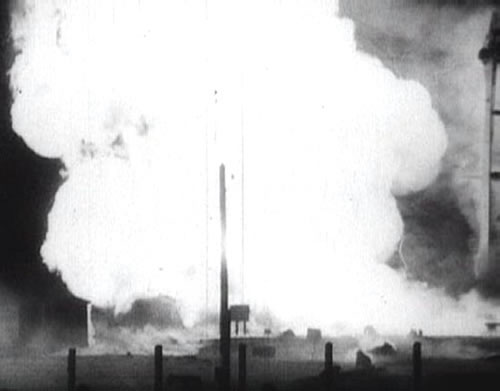
R-16 boosters explode.
On October 24, Russia celebrated 50 years of the most terrible accident in the history of world space exploration. More than 90 people died, including a marshal. It took nearly three decades, the truth about this tragedy was exposed.
The cause of the tragedy
In 1960, in the context of the Cold War and the race between the two Soviet and American powers at the peak stage, then Soviet leader Nikita Khrushchev waited impatiently for a new card: inter-missile. R-16 continent.
Meanwhile, chief engineer Mikhail Yangel and marshal Mitrofan Nedelin (commander of the Strategic Missile force) were anxious to set up the achievement to celebrate the October Revolution anniversary. Therefore, although there are still many questions Technical issues have not been resolved, but in late September 1960, the first R-16 rocket with LD1-3T code was still transferred to Baikonur space airport to prepare for launch.

At 8 am local time on October 21, the rocket was loaded onto the launch pad and two days later it was pumped with fuel of UDMH-citric acid (slang name is Venom). This is a very high performance two-component fuel that is used quite commonly in the rocket industry, despite the fact that it is extremely toxic and highly corrosive. As soon as the fuel injection process has just been completed, it was discovered that a leak rate of 142 - 145 drops per minute. However, those responsible believe that this problem can be fixed and send a specialist to cover the leak.
Some later assesses that, when deciding to pump the toxic fuel for the LD1-3T missile, those who designed and built it went to an irreversible point. Because at that time, there was no process to pull fuel out of the rocket in case of an incident. In addition, if the fuel is drawn, LD1-3T will become scrap, not be able to be used for launch next time.
After the fuel leak, another incident occurs when engineers start the diaphragm at the oxygen supply pipe. Due to the control circuit fault, the membrane on the first floor of the rocket was blown away. This membrane prevents propellant from coming from the chamber to the engine. Without it, one could not keep the fuel-filled rocket on the launch pad for another two days as planned. Therefore, the time of test launch must be pushed up soon. Meanwhile, the incident continues to occur. A valve of the fuel system caught fire and a circuit was shorted. All were hastily overcome in the night of October 23.
On the 24th, the preparations for launching were sketchily and urgently under pressure from Moscow. Witnesses said Marshal Nedelin received at least two phone calls on a special line, which perhaps called Khrushchev, urging about the launch of the missile. Most of the test team and Nedelin themselves have to go to the scene to consider. Their position is only 15 - 20m from the rocket.
30 minutes before the launch time, a large fire from the missile's second floor engine suddenly ignited and quickly covered the fuel cell on the first floor, then all turned into a giant fireball with up to diameter. 120m. Most of those present near the rocket were burned immediately. Some screamed, struggling like torches living in the sea of fire. The platform and the surrounding area flow under the formidable heat of huge amounts of fuel.
Some people are far away from the fire, fortunately not too burnt, suffocated because of toxic smoke from burning fuel. Light from the fire can be seen from 50km away and the fire is only controlled after 2 hours. 76 people died at the scene, 16 others died at the hospital a few days later. Most people die, including the deformed Marshal Nedelin.
Become a common memorial day
However, due to the context of the Cold War at the time, the incident while testing this missile was kept private. On October 26, 1960, Soviet news agencies announced: Marshal Nedelin was killed in a plane crash while on a business trip. In 1989, the first details of his death and more than 90 others were revealed. Testing of R-16 missiles is still promoted.
On February 21, 1961, the first " R-16 " intercontinental ballistic missile was successfully tested. The " R-16 " missile has a range of 11,000 km and is capable of carrying a thermonuclear warhead with a power equivalent to 5 million tons of TNT. October 24 is considered a " dark day ", because three years after the disaster, also in a missile test, another accident happened that killed seven people. This day is considered by the Russian Space Agency Roscosmos to be a commemorative day for all who sacrificed for the development of space technology in general, including missiles for defense purposes.